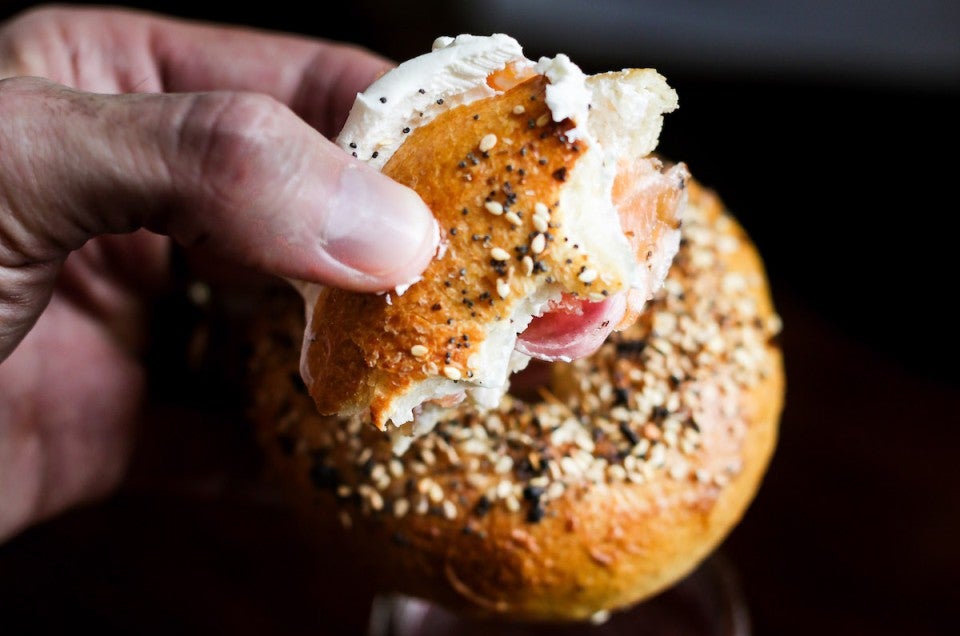


When it comes to bread, bagels are in a class of their own. Little about their appearance, texture, or how they are made resembles other breads. Their unique shape; tight, fine crumb; chewy texture, and glossy, pleasantly leathery crust set them apart.
There are five main elements that go into the the texture, flavor, and appearance of a great bagel:
Let's dive into each one.
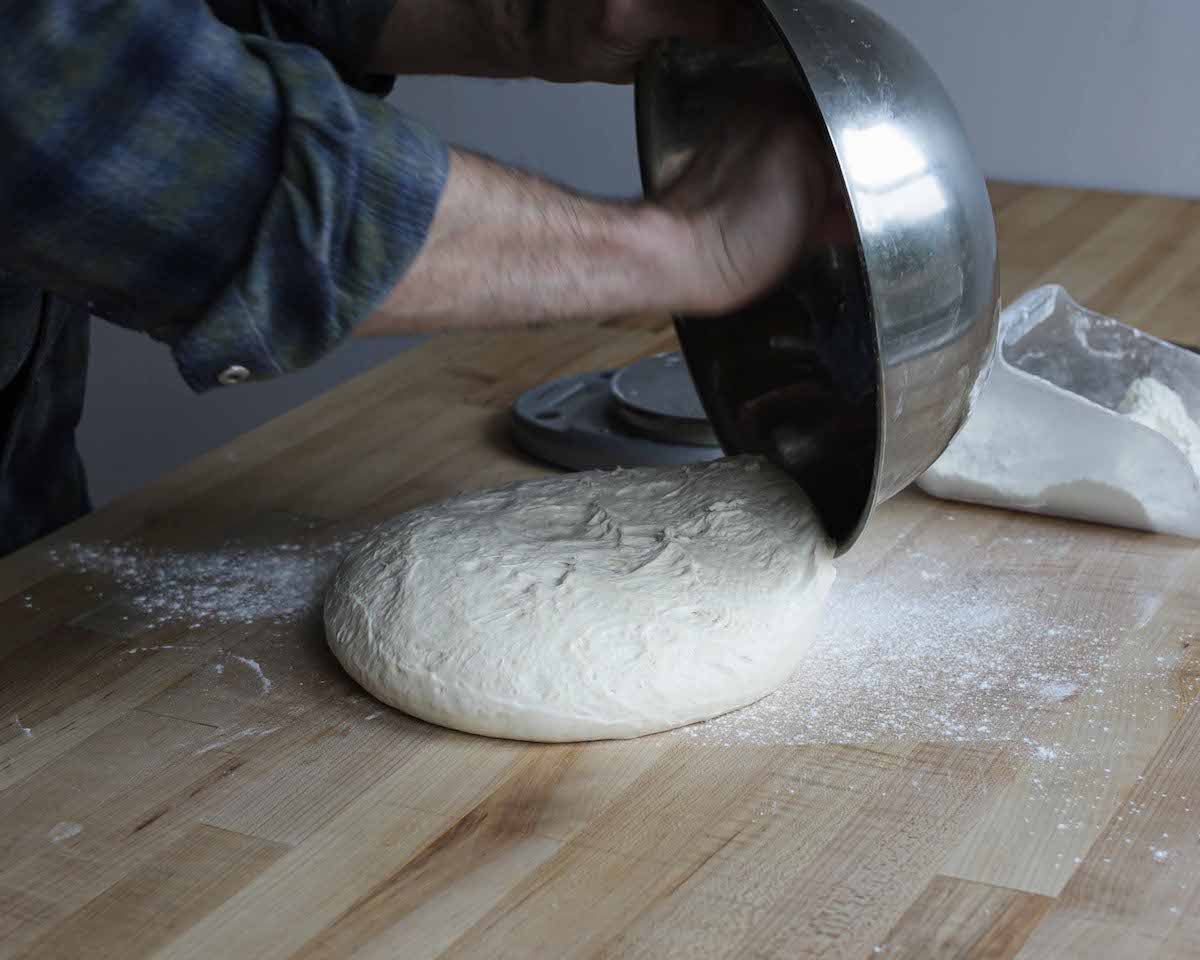
Bagels are usually made from a stiff, dry dough, with hydrations in the range of 55 to 65% (compared to soft sandwich or crusty artisan breads, which are usually 65% hydration and higher). This helps give them their signature tight crumb structure and their chew. It’s also why even the best bagels should be eaten within a few hours of baking — with so little moisture in the dough, the crumb will stale quickly.
Recipes on the higher end of that hydration scale produce a breadier, more open-crumbed bagel, which can be nice; they also have the added benefit of being somewhat longer-lasting. Higher-hydration bagels are also easier to mix: Low-hydration bagel doughs can be a challenge to knead fully without some serious effort, even in a stand mixer.
Flour choice plays a major role in determining a bagel’s texture and crumb structure. New York-style bagels with an intense chew are usually made with high-gluten flour that has a protein percentage at or above 14%. But bread flours with a more modest amount of protein (around 12%, like our 12.7% unbleached bread flour) can make an excellent bagel too, albeit one with a more tender, open crumb; as can the inclusion of whole grain or high-extraction flours, which provide more flavor and texture as well.
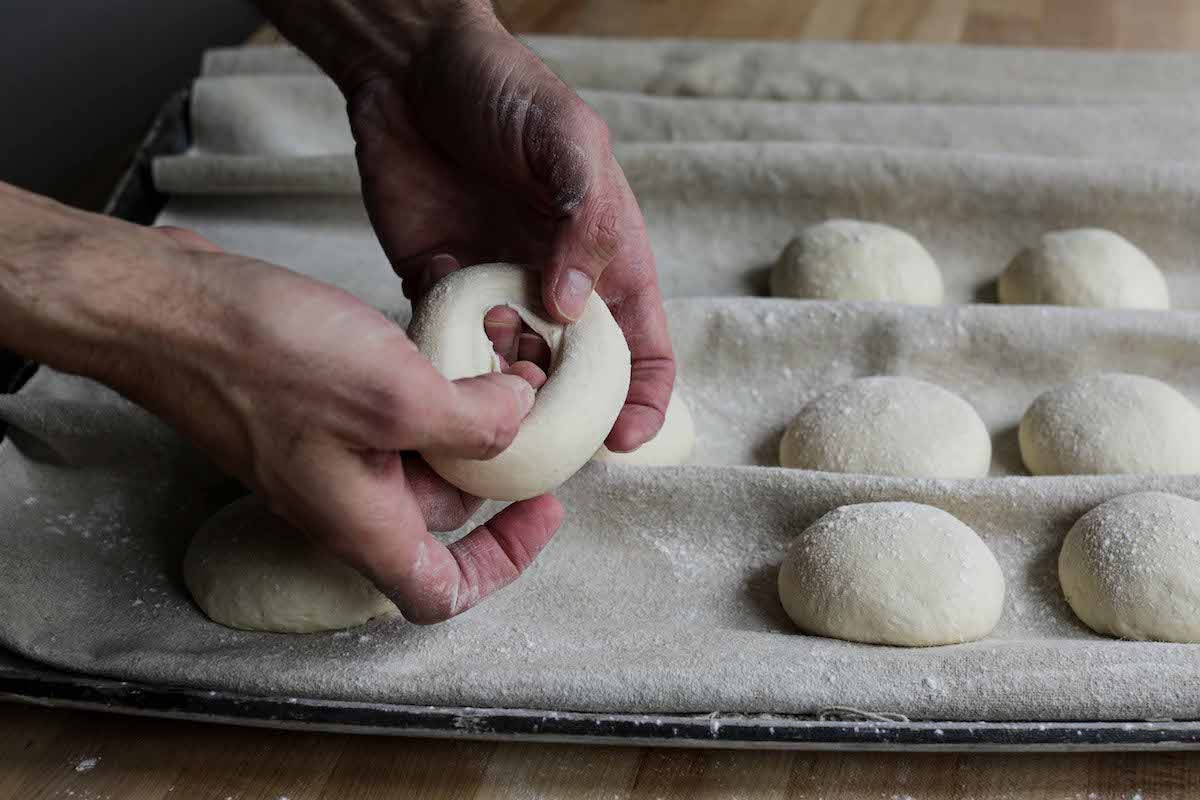
The third element that determines the texture and crumb structure of a bagel is how the bagel is shaped. A good amount of the chew in a bagel should come from the baker building tension into the dough during shaping.
There are two basic ways to shape a bagel: the rope-and-loop method, and — as my friend and fellow bagel-baker Jess Wagoner likes to call it — the “belly button poke."
In the first method, you form the pre-shaped ball of dough into a rope. You then wrap the rope all the way around your open hand and roll your palm over the overlapping ends to seal them together. Because it involves a lot of dough manipulation, this is the method of choice when you want to build a lot of tension into the dough. (To achieve even more tension, you can corkscrew the rope around itself a few times before forming the loop.) For a visual of the rope-and-loop, watch Jeffrey Hamelman's episode of the Isolation Baking Show on bagels.
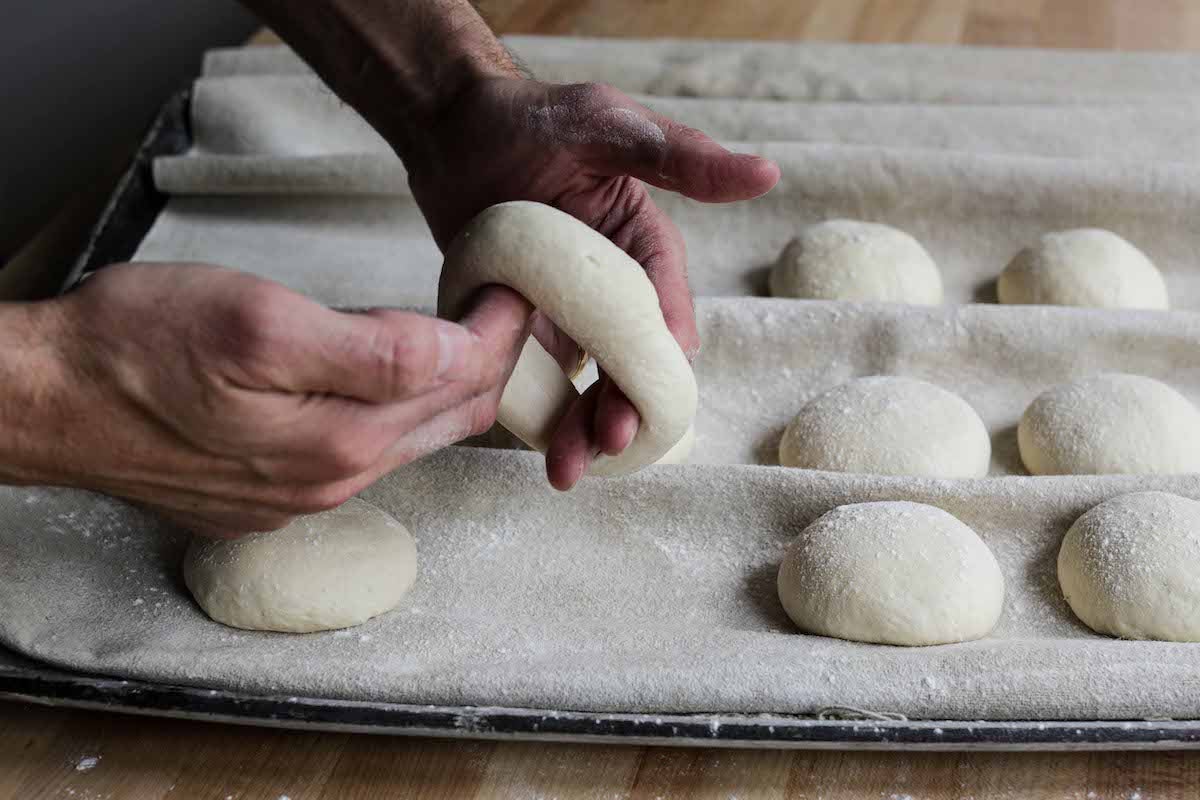
The belly button poke technique is both easier to pull off and far gentler on the dough. To do it, you hold the ball of dough in your hand and push your fingers through the center from both sides to form a ring, which you then stretch out to bagel dimensions by gently rolling both index fingers around the inside of the hole. (The whole process is actually easier to do than it is to describe. You can watch Martin demonstrate the technique in his bagel video.)
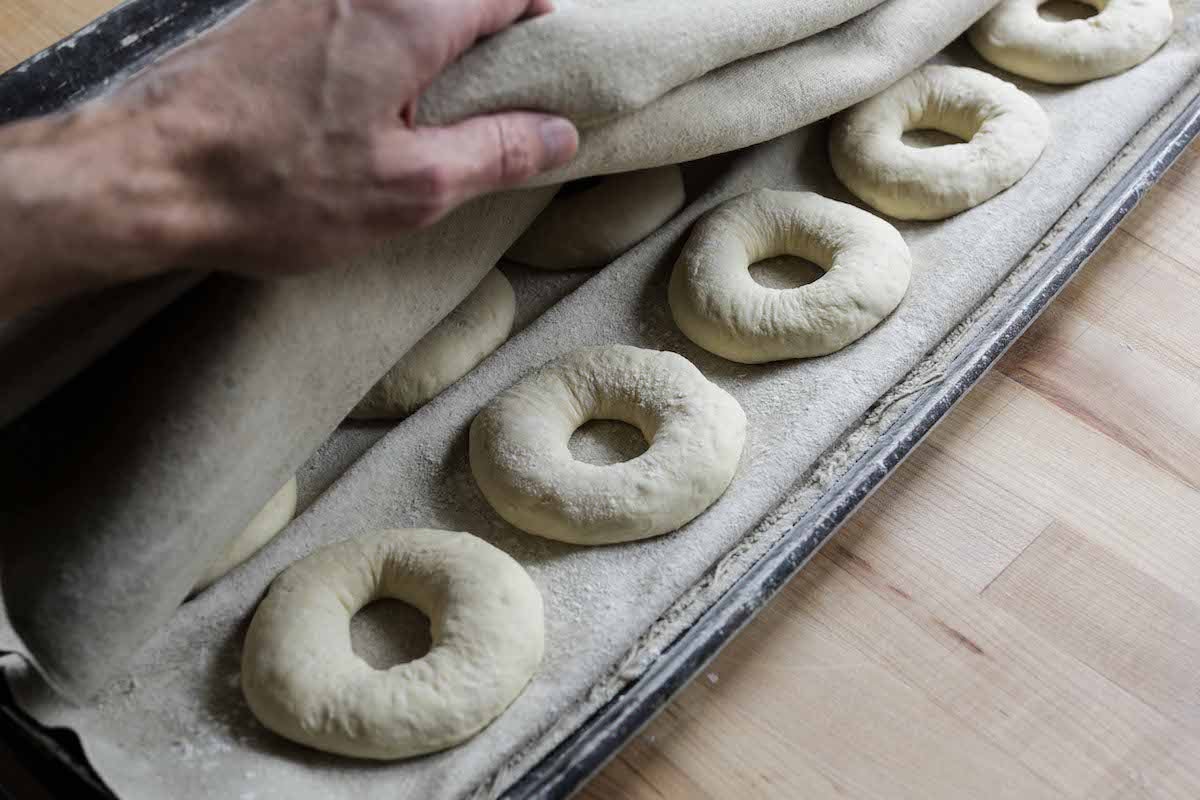
The next element that goes into a bagel’s texture is how it's fermented. Some recipes ferment the dough in bulk (as one large batch of dough before dividing) and then shape, boil, and bake the bagels in quick succession. Other recipes have you shape the dough into bagels and then proof them for a lengthy stretch, usually in the fridge. The longer the shaped bagels sit before baking, the more tender and open-crumbed they’ll tend to be, since the tension built into them during shaping will have had time to relax.
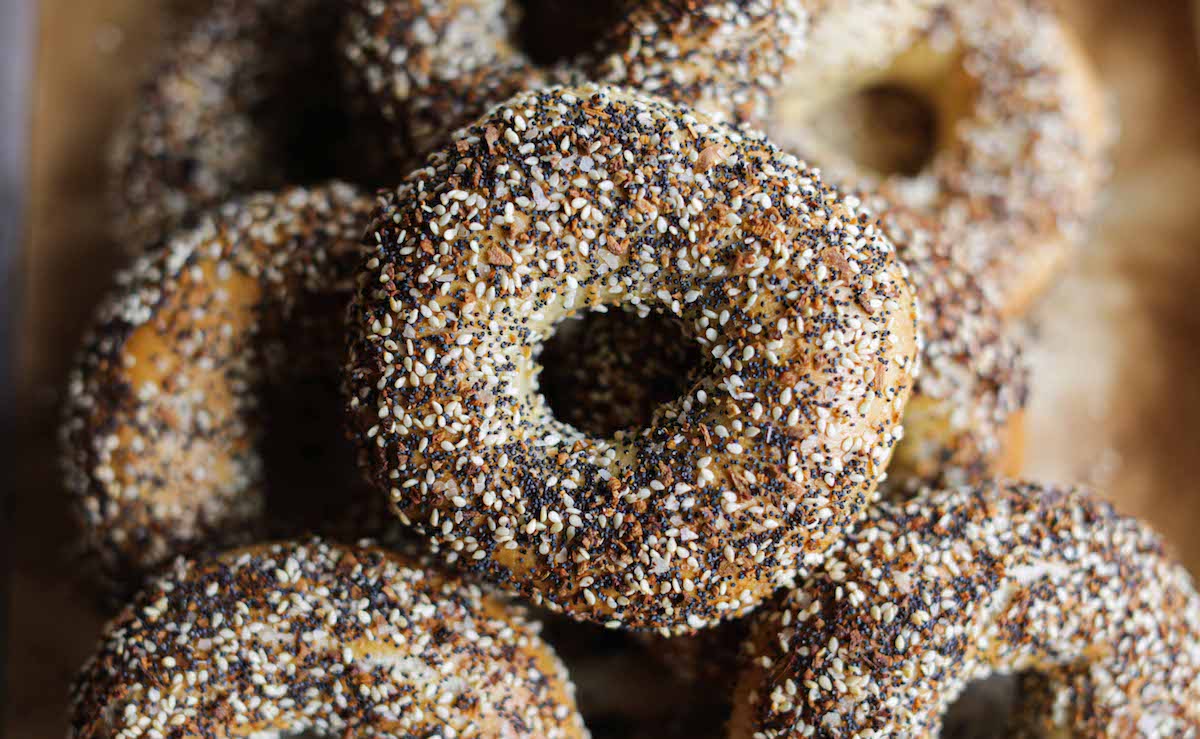
How you ferment a bagel also determines its taste. For this reason, most good bagels get a long, cold proof to develop flavor. Some recipes — like Martin's Bagels or Jeffrey's Bagels with Pâte Fermentée — also add a preferment, which increases the overall fermentation time. Classically, bagels were made with yeast and not sourdough, but there are plenty of sourdough bagel producers nowadays, and the use of a sourdough culture (alone or in addition to commercial yeast) will lend the bagel a notable tang.
Perhaps the most important reason for a long, cold ferment — especially in a commercial setting — is convenience and maximum freshness. Shaped bagels under cold fermentation have a wide window of readiness, which means they can be pulled from the fridge and baked on demand over the course of a day.
Convenience and freshness are both plusses for the home bagel baker too, of course, especially if your goal is freshly-baked bagels for breakfast. Let's say you want to mix and shape your bagels on a Friday morning, but you want to bake them late on Saturday morning so they're warm for brunch. You can stick the shaped bagels in the fridge and leave them there until you're ready to bake, even if your recipe doesn't specifically call for that step. The cold temperature will slow the fermentation so you don't have to worry about overproofing, and the extra time will both develop flavor and allow you to adapt the timeline of the recipe to fit your schedule.
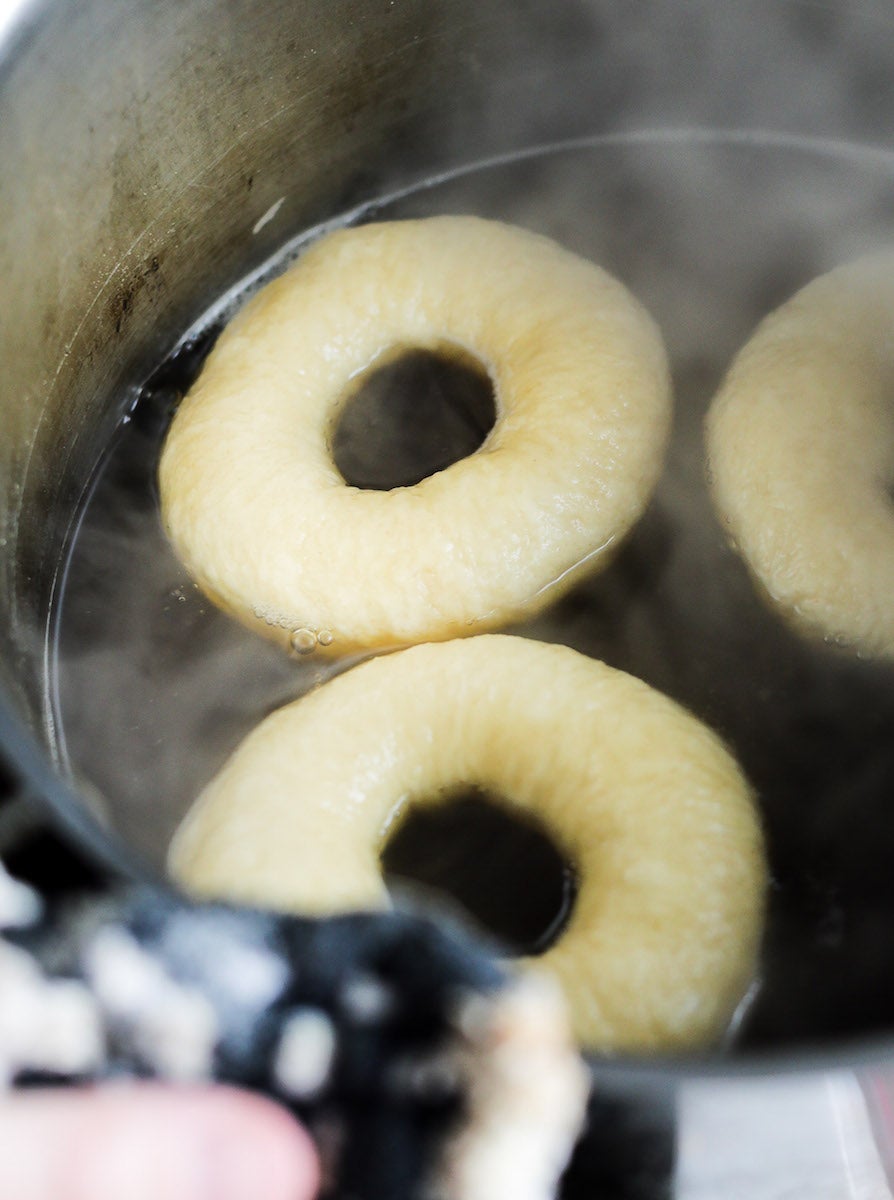
There’s a lot that goes into what makes a bagel a bagel, but one indispensable step to mention in any discussion of bagel technique is the boil: Just prior to baking, bagels get dunked into a boiling water bath for a minute or two on each side, without which you’d have nothing more than a doughnut-shaped roll. This serves to gelatinize the starches on the bagel’s exterior, which helps create the bagel’s signature leathery, glossy skin once it hits the heat of the oven.
The bagel bath usually contains at least one other ingredient beyond water. Salt is sometimes added for flavor, as is barley malt syrup or non-diastatic malt powder (for a New York bagel), or honey (in the case of a Montreal bagel); sugars like malt and honey also increase the bagel’s sheen. (Molasses is a easier-to-source and similarly-flavored stand in for malt syrup.)
Sometimes lye (sodium hydroxide) is added to raise the pH of the crust, which promotes browning and caramelization during the bake (this is identical to how pretzels are given their signature flavor and appearance, though in the case of bagels the concentration of lye used is much lower).
Bagels are typically baked in a hot oven (450˚ to 600˚F) for maximum spring and a shiny, crisp exterior. New York-style bagels are sometimes baked on water-soaked, burlap-lined cedar or pine boards, which serve to keep the undersides of the bagels moist and cool as they bake so they don’t set before a perfectly round cross-section can form. (The bagels are flipped off of the boards onto the oven floor at about the midway point to allow the bottom side to brown.) Other bakers — including home bagel makers — employ perforated pans or a rack-lined sheet pan to achieve a similar effect.
Of course, you can't crank your home oven to 600˚F, and that's OK. I get excellent results all the time baking anywhere from 425°F to 500˚F in my home oven.
One consideration: If you're lucky enough to own any kind of pizza oven, like an Ooni, try baking your bagels in it. The ultra-high heat will help mimic the experience of baking bagels in a professional oven.
Bagels are one of those all-else-being-equal sorts of breads, meaning that hydration, flour choice, shaping, and fermentation schedule cannot be considered in isolation of one another — choices made in one area can’t help but dictate what happens elsewhere. For example: If I make a bagel dough that is on the high end of the hydration scale (say 65%), I likely won’t be able to proof it for a long time post-shaping, or it will be so slack by the time it comes to baking that it will be hard to handle and likely end up a misshapen, wrinkled blob. Unless perhaps I opt for a high-protein flour and/or make sure to build tons of tension into the dough during shaping.
Opinions on what make for an “ideal” bagel vary of course, but to my mind the best ones have a plump, rounded exterior and a fine crumb structure, with a balanced chewy-yet-tender texture. Achieving that requires a careful dance between building structure in the dough with high protein flour and proper shaping (for structure and chew), while still pushing the hydration as high as possible (for tenderness).
As another example, although high protein flour is the obvious (and most common) choice for building dough strength, that doesn't mean you can't make a fantastic bagel with all-purpose flour (like one of King Arthur's most popular bagel recipes: Martin's Bagels). Flour plays an important role, but the final result will be influenced by the other elements (hydration, shaping, and fermentation). Balancing all of those elements is what makes a recipe great: If you're not leaning as heavily on a higher protein flour, you'll balance the other factors differently, using them to draw out strength and yield the right texture. This is one more reason (of so many!) why starting with a great recipe matters.
And the real truth of it? Any homemade bagel made by your own two hands is going to be satisfying on many levels.
Photos by Martin Philip.